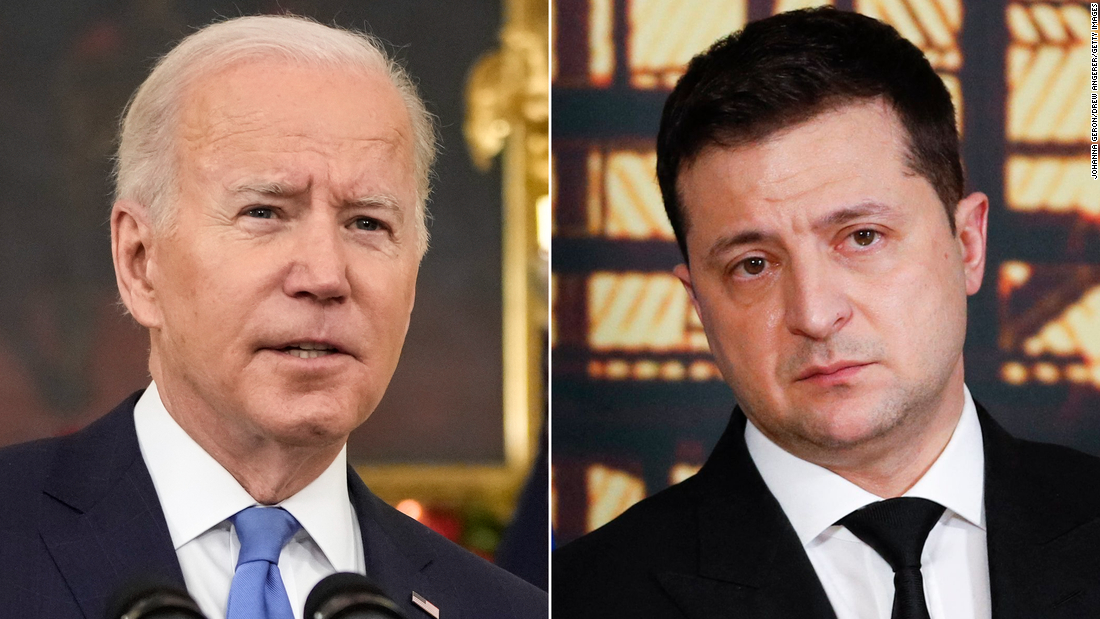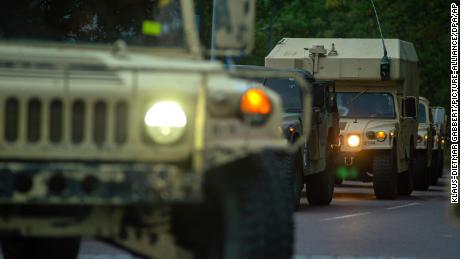The White House, however, disputed the official’s account, warning that anonymous sources were “leaking falsehoods.” They did state that Biden warned Zelensky an imminent invasion is a “distinct possibility.”
Zelensky, however, restated his position that the threat from Russia remains “dangerous but ambiguous,” and it is not certain that an attack will take place, the official said.
National Security Council spokeswoman Emily Horne disputed the senior Ukrainian official’s description of the call. “Anonymous sources are ‘leaking’ falsehoods,” she told CNN. “President Biden said that there is a distinct possibility that the Russians could invade Ukraine in February. He has said this publicly and we have been warning about this for months. Reports of anything more or different than that are completely false.”
The frank discussion between the two leaders comes as the US and NATO continue to brace for the prospect of a Russian invasion. Though they have stressed the need for diplomacy, the White House has warned an invasion could be imminent with tens of thousands of Russian troops massed on the Ukrainian border.
The call lasted an hour and 20 minutes Thursday, according to a US national security official, highlighting the extensive issues the two leaders had to discuss amid the Russian troop buildup. The official described the call as “long and serious,” but “productive,” as Biden and Zelensky discussed Russia’s recent aggressions.
Biden told Zelensky that US officials have assessed an invasion could potentially happen in February, but did not say it definitely would, the official said.
White House says Biden promised US would ‘respond decisively’ if Russia invades
A White House readout of the call said that Biden “reaffirmed” to Zelensky that the United States would “respond decisively if Russia further invades Ukraine.” Biden also said the US will explore “additional macroeconomic support” to help the Ukrainian economy as a result of Russia’s military buildup.
“President Biden noted the United States has provided Ukraine with over half a billion dollars in development and humanitarian assistance in the last year, and is exploring additional macroeconomic support to help Ukraine’s economy amidst pressure resulting from Russia’s military build-up,” the White House said in the readout.
The senior Ukrainian official, however, told CNN that Biden said Ukraine would not be offered significantly more military help.
Zelensky urged his American counterpart to “calm down the messaging,” warning of the economic impact of panic, according to the official. He also said Ukrainian intelligence sees the threat differently.
The Ukrainian leader pointed to a recent breakthrough in negotiations with Russia in Paris, saying that he hoped a ceasefire agreement with rebels in eastern Ukraine would be maintained. He also said the talks between the US, Russia and NATO still had some distance to run before diplomatic efforts had been exhausted, the official said.
Earlier in the day, another source from the US side said there is a recognition in the White House that Zelensky has “multiple audiences” and is trying to balance them. “On the one hand, he wants assistance, but he has to assure his people he has the situation under control. That’s a tricky balance,” the source said.
Pentagon says Russian buildup is continuing
Russia’s military buildup along the Ukrainian border has increased over the past 24 hours, the Pentagon said Thursday, while the US awaits Russian President Vladimir Putin’s response to its written proposals submitted to Moscow on Wednesday.
“We continue to see, including in the last 24 hours, more accumulation of credible combat forces arrayed by the Russians in, again, the western part of their country and in Belarus,” Pentagon press secretary John Kirby said at a press briefing.
Kirby described the buildup as “not dramatic” but “also not sclerotic.”
The US is still holding out hope that diplomatic efforts with Russia can lead to a de-escalation. On Wednesday, the US and NATO submitted separate written responses to Russia’s publicly aired concerns, an overture that Moscow had requested. While the US did not disclose what was contained in the document, Secretary of State Antony Blinken told reporters Wednesday it did not give any ground NATO’s “open-door policy,” leaving the US at odds with Russia’s central demand that NATO commit to never admitting Ukraine.
“There is no positive reaction on the main issue in this document,” Lavrov told reporters in Moscow. “The main issue is our clear position on the inadmissibility of further expansion of NATO to the East and the deployment of strike weapons that could threaten the territory of the Russian Federation.”
Blinken said Thursday he had “heard a variety of initial responses from different people in Russia to the paper that we shared with them, as well as to the paper that NATO shared with them.”
“But the response that counts is President Putin’s response, and to the best of our understanding, according the Russians, these papers are on his desk,” he said in an interview with Radio Free Europe/Radio Liberty.
“And we’ll look forward to his response, which I’m sure will be conveyed through Foreign Minister Lavrov and others in the days ahead. That’s what matters most,” he said.
On Thursday evening, US ambassador to the United Nations Linda Thomas-Greenfield called for a UN Security Council meeting on the crisis to take place on Monday.
“The commission is responsible for designing, shaping and developing the sanctions,” von der Leyen told CNN’s Christiane Amanpour. “We are very clear that if there is any further aggression or military aggression of Russia against Ukraine, there will be massive consequences, and severe costs for Russia.”
Pentagon details troops on heightened alert
These units include “medical support, aviation support, logistical support” and “combat formation,” the Pentagon spokesman said.
Inside Europe, Kirby said top general of US European Command, Gen. Tod Wolters, was “taking prudent steps” to make sure that US troops based in Europe could be moved within the continent if needed.
The Pentagon was “not ruling out” the possibility that forces in Europe could be moved to “help bolster capabilities of NATO allies,” Kirby said.
CNN reported Wednesday that the US and a handful of allies are in discussions to deploy thousands more troops to Eastern European NATO countries before any potential Russian invasion of Ukraine as a show of support in the face of Moscow’s ongoing aggression, according to three US officials familiar with the discussions.
Among the countries considering accepting the deployments are Romania, Bulgaria, and Hungary. The deployments would number approximately 1,000 personnel to each country and would be similar to the forward battle groups currently stationed in the Baltic States and Poland.
“We take our NATO commitment seriously. And we’re going to be consulting with allies as we have been certainly in coming days. And if there’s ways in which we can help bolster their capabilities to help their defensive postures, we’re going to take a serious look at that,” Kirby said.
CNN’s Kaitlan Collins, Jennifer Hansler, Natasha Bertrand, Ellie Kaufman and Kylie Atwood contributed reporting.







